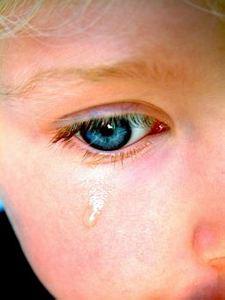
Bedwetting is a common problem but an upsetting one for both parent and child. It is so common that an entire industry has grown up around the problem including books, equipment and even medications that offer cures.
Research turned up the following practical and compassionate article on bedwetting from the website of Dr. Sears (Ask Dr. Sears.com), which is reprinted in its entirety.
William Sears, MD and his wife Martha Sears, R.N. come by their knowledge not only from 30 years practicing pediatric medicine but raising 8 children of their own.
Millions more have sought their advice through the 40+ pediatric books, articles in parenting magazines, and appearances on more than 100 television programs such as 20/20, Good Morning America, Oprah, CBS This Morning, CNN, NBC’s Today Show and Dateline.
Myths about Bedwetting
-
Bedwetting is not a psychological problem. It does not mean that your child is too lazy to get up, is using bedwetting as a control issue, or is manipulating the family.
- Misunderstandings about bedwetting have kept it from being viewed as a legitimate medical problem. If the lungs malfunction, the child is medically and sympathetically treated for, say asthma. If the bladder malfunctions, the child is thought to be lazy, stubborn, and immature. You would certainly be sympathetic to an asthmatic child who wheezes at night because his lungs aren’t filling with enough air.
- Think of bedwetting as any other medical concern in which an organ of the body is malfunctioning. Bedwetting is a malfunction of the bladder-brain communication system. The child sleeps so deeply that bladder-overfilling and spilling occurs.
- It’s a myth that children don’t care. Really, what child would want to wake up in a wet, smelly bed every morning, and start each morning stripping the bed and carrying wet sheets to the washer?
Facts About Bedwetting
1. The medical term for bedwetting is “enuresis,” which refers to bedwetting that is not due to an abnormality of any portion of the urinary tract. Primary enuresis means the child has never been dry, whereas secondary enuresis is the term used for a child who has previously been dry but then starts wetting his bed. Bedwetting is sometimes referred to as “nocturnal enuresis” or “nightwetting.” Sometimes it’s called “sleep wetting,” since some children may also “nap wet.” Bedwetting really should be called “sleep wetting” because it occurs during sleep.
2. Fifteen percent of five-year-olds or around three to four children in a first grade class, are not dry every night. Eighty-five percent of children eventually outgrow bedwetting without treatment. In the teenage years, only two to five percent of children, or one child per class, continue to wet their bed. Bedwetting boys outnumber girls by a ratio of 4 to 1.
3. Bedwetting is not an emotional or psychological problem, nor does it reflect a dysfunctional family. It is a problem of sleeping too deeply to be aware of bladder function.
4. The genetics of bedwetting are similar to that of obesity. If both parents were bedwetters, the child has a seventy- percent chance of being a bedwetter. If only one parent was wet at night, the child will have a forty-percent chance of following his parent’s nocturnal habit.
5. It helps to first understand how children usually achieve bladder control. In early infancy, bladder-emptying occurs mostly by the bladder-emptying reflex. When the bladder reaches a certain fullness and the muscle has stretched to a certain point, these muscles automatically squeeze to empty the bladder. Sometime between 18 months and 2½ years, most children have an awareness of bladder fullness, the first step toward bladder control. Next, the child becomes aware that he can consciously inhibit the bladder-emptying reflex and hold in his urine. As a result of his urine-holding efforts, his bladder stretches and its capacity increases. When the child can consciously inhibit the bladder-emptying reflex, he achieves daytime bladder control. Nighttime control occurs when the child can unconsciously inhibit the bladder-emptying reflex.
6. Think of bedwetting as a communication problem: the bladder and the brain don’t communicate during sleep. The bedwetting child literally sleeps through his bladder signals. Delay in bladder control can occur if there is a delay in awareness of bladder fullness, a small bladder, or the bladder-emptying reflex continues to be strong well into later childhood. These components of bladder maturity occur at different ages in different children. Bedwetting is simply a developmental lag in the mastering of a bodily skill. There are late walkers, late talkers, and late dry-nighters.
7. Bedwetting is a sleep problem.
New insights into the cause of bedwetting validate what observant parents have long noted: “He sleeps so deeply, he doesn’t even know he’s wetting the bed.” These deep sleepers are not aware of their bladder sensation at night, let alone how to control it. In addition to bedwetters sleeping differently, the hormonal control of urination may act differently in some children.
8. Some bedwetters may have a deficiency of ADH (anti-diuretic hormone), the hormone that is released during sleep and concentrates the urine so that the kidneys produce less of it during sleep and the bladder doesn’t overfill.
9. Normally, bladder fullness works like supply and demand. The bladder fills with just enough urine at night so that it does not overfill and demand to be emptied. Bedwetters may overfill their bladder so the supply outweighs the demand, but because they are sleeping so soundly they just don’t tune into their bladder fullness.
10. A small number of children have small bladders that are more easily overfilled.

